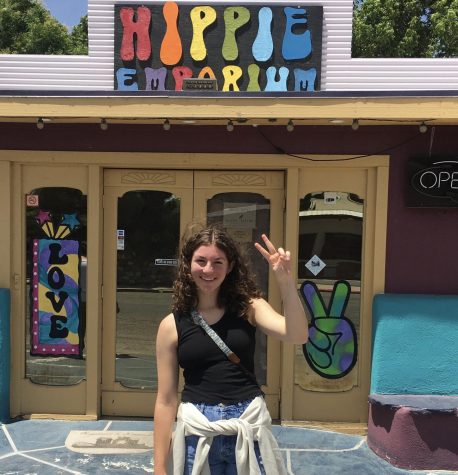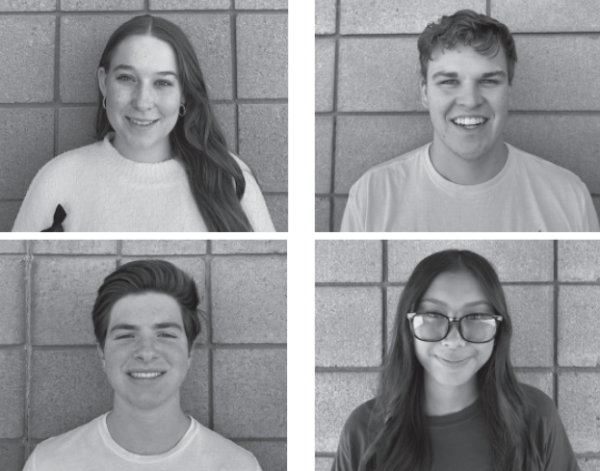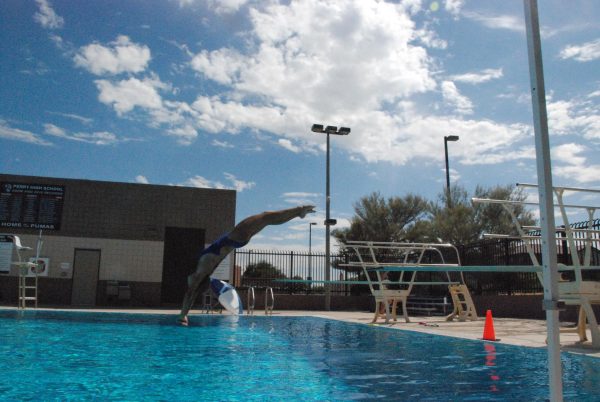“Society’s new cigarette” has skyrocketed in popularity on campuses across America
One pod of e-liquid has the same amount of addictive chemicals as 20 cigarettes.
“It’s society’s new cigarette”- Principal Dan Serrano
The stereotype of your average high school stoner has disappeared with the introduction of vapes on campus.
For decades the renegade student who wore a Nirvana t-shirt and talked back to the teachers was stereotyped as the “burnout” who would inevitably be caught smoking in the high school restroom.
But in 2018, e-cigarettes and vapes have changed the stereotype, and principal Dan Serrano admits that the battle has become more complex.
“It’s athletes, it’s kids with good grades,” he explained. “This is probably the worst in my career as an administrator…that I’ve seen something this bad.”
In any form, e-cigarettes and vapes have a mass presence on campus, a presence that has introduced a new issue of ethics and addiction to the administration.
What is a vape?
An e-cigarette is a device that is advertised as less bodily harmful than actually smoking a tobacco product. They can be modified as wax pens to hold marijuana, but most of them contain some type of nicotine juice. One full pod contains the same amount of addictive chemicals as twenty cigarettes, which adds up to a whole pack.
A device usually consists of a battery, some variation of a heating coil to create the cloud of moisture, a pod of liquid that contains the nicotine, and an aerosol cartridge. The e-liquid can be purchased in multiple flavors, like mango or mint, and adds an enticing element for teenage and adult smokers alike. Adding extract to the nicotine concentration isn’t only a jab at our generation. Many users turn to the flavored pods to transition from cigarettes and hopefully to stop smoking all together.
Vapes and pods can be found at the register of most local gas stations, making them readily available to anybody with a valid ID.
E-cigarettes and vapes in Arizona
Local and federal authorities have taken notice of what they’re calling an epidemic across the country and here in Arizona.
“We’re assuming the worst. While cigarette use is going down, we’re assuming e-cigarette use here is going up, just as it is nationally,” Wayne Tormala, Chief of the Bureau of Tobacco and Chronic Disease at the Arizona Department of Health Services, confirmed.
Since the ban of e-cigarette retail to minors was put into place in Arizona in 2013, the state health department has been conducting “Counterstrike” operations. Store clerks in Arizona can be fined up to $300 for selling vapes to minors.
Vaping has gained much of its popularity through its large web presence. YouTube can reach anyone with an Internet connection, giving “stealth vapers” a wide range of viewers. The practice of stealth vaping is exactly what it sounds like. YouTubers attempt to outdo one another in finding and constructing the most discreet ways to smoke in public. Stealth vaping appeals directly to the students attempting to hide their e-cig at school.
Certain YouTube channels are dedicated to the art of vaping, Anyone can search up tutorials on creating a shell for your device to make it look like anything from a Sharpie pen to an iPod. People film videos that demonstrate vaping tricks and tips for “beginning vapers.”
E-cigarettes and vapes on campus
Laws prohibit any nicotine product on school grounds, but this doesn’t stop students from bringing their paraphernalia to the campus.
Principal Dan Serrano understands that students vaping on campus is more prevalent than ever.
“Every day I bet we get 5-6 kids,” he said. “We do more walking through bathrooms than ever before.”
Even having a charger for a vape in your possession at school could land students in a five-day suspension, community service hours and a fine to pay, whereas selling narcotics would land the student expelled and arrested.
An anonymous student confirmed the seriousness of the addiction that accompanies vaping. “When I tried to quit, I was shaky, nauseous, and couldn’t focus.”
This specific source commented that “I use around one pod a day, and spend $30 a month.”
On the other hand, a source that only uses one pod a week and spends almost nothing, saying that “it would be really easy to quit.”
Despite the contrast in both cost and usage, both sources said that they started vaping because of peer pressure.
“Everyone was doing it, so might as well,” added one of the students.
In a recent Precedent poll, students were asked about their perception of vaping among their peers — 68 percent believe that more than half of the student body vapes.
But in the same anonymous poll, only 18 percent admitted to vaping themselves.
Peer pressure seems to be a deciding factor for vaping. Of those who admitted to vaping, 29 percent of students claimed that they vape because of peer pressure. Additionally, 58 percent replied that the reason for their usage is the buzz they get, while 37 percent responded that they vape for the flavors.
Health risks and other consequences
An extremely common misconception about vaping is that it’s virtually harmless. Users are often informed that because the cloud doesn’t actually get into their respiratory system, or because it is made of moisture rather than smoke, it won’t have the same consequences as a cigarette.
This widely accepted idea is actually false.
The liquid that drips into vapes contains high concentrations of diacetyl, a lethal chemical that harms both those who manufacture it and those who consume it. The chemical is often man made and is usually used to mimic the taste of butter. Researchers have discovered that there are dangerous levels of diacetyl in microwave popcorn, which helped nickname the disease caused by ingesting the chemical.
Popcorn lung, another term for bronchiolitis obliterans, is a condition that causes detrimental scarring to the smallest airways in your lungs. The scarring slowly destroys your windpipes, making it harder and harder for one to get air. The moisture produced by vapes has been proven to cause the same symptoms as this disease.
Another concern of the public? Explosions.
Literal explosions occur randomly when the heating coil in a device overheats or juice drips into the battery and causes shortages.
Health risks are not the only cause for concern. Many students are not considering the consequences of having a hit on your record.
“You have 18-year-olds who are getting arrested for [dealing narcotics] and that’s a game changer,” Serrano said. “Stuff gets on your record and you don’t get hired.”
Actions being taken
Last week the e-cigarette company, Juul, announced that the corporation would take steps to halt the retail of vapes to teens. “For us to successfully fulfill our mission of helping adult smokers, we must be trusted and we must earn that trust. That starts with action, not words,” divulged CEO Kevin Burns.
The company’s plan of action has been summed up into four categories: flavors, retail stores, social media, and most importantly, the future.
In a Nov. 13 press release, Burns stated “Our mission at Juul labs is to improve the lives of the world’s 1 billion smokers and eliminate cigarettes.” He continued, “Our intent was never to have youth use Juul, but they are. As the industry leader, we must lead the category in decreasing underage use.”
RELATED: Juul press release
Is it worth it?
When something results in such serious health risks, addiction, long-term drawbacks, and legal consequences, students must begin asking themselves: Do the negative consequences of vaping outweigh the positive?

Anna Myers is a senior at Perry High School, and is excited to be the 2020-21 Managing Editor for The Precedent. Out of the newsroom, Anna enjoys participating...








